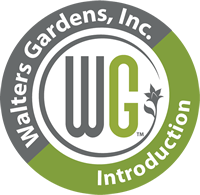Brunnera macrophylla 'Sterling Silver' PP31280

Common Name: Heartleaf Brunnera, SIberian Bugloss
If you are searching for a new foliage plant for shade that looks like it is on steroids (but isn't) try this new silver-leafed variety. 'Sterling Silver' is an improvement from 'Looking Glass' with the same stunning silver color and heart-shaped foliage, but with larger leaves (7-8" wide) and larger habit, better leaf quality, and increased heat tolerance. In early spring, multitudes of tiny blue, forget-me-not flowers appear above the foliage.
Brunneras are classic perennials that are treasured for their shade tolerance and lovely blooms. They make a fantastic groundcover, though the variegated forms may be slower to spread than the species. Try growing them in containers too so they will be close at hand when you want to snip a few blooms for a spring bouquet.
20ct Plug Tray |
72ct Plug Tray |










